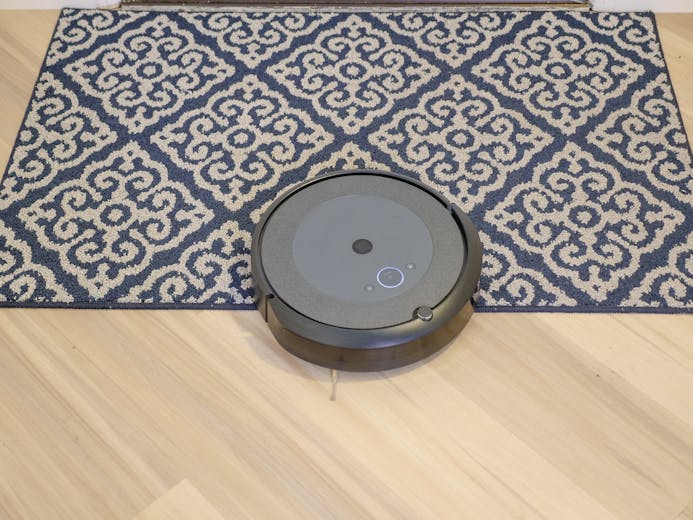Augmented Reality: Blending Digital & Physical Worlds
Augmented Reality (AR) overlays digital information—like images, sounds, and text—onto our view of the real world, creating interactive experiences that enhance our perception rather than replacing it. This technology transforms how we learn, shop, play, and work by adding contextual layers of data to our surroundings.
Explore AR Experiences Artificial Intelligence isn't required here; the focus is Augmented Reality (AR). AR technology integrates computer-generated sensory input (visuals, audio, haptic feedback) with the user's existing physical environment in real-time. Unlike Virtual Reality (VR), which creates a completely immersive digital simulation that replaces the real world, AR *enhances* or *augments* the user's perception of their actual surroundings. Think of it as adding a digital layer on top of reality, viewed through a device.
AR systems typically use cameras and sensors (like GPS, accelerometers, gyroscopes) on a device (smartphone, tablet, smart glasses) to understand the real-world environment. Sophisticated software then processes this input, recognizes surfaces or objects, and precisely overlays relevant digital content. Techniques like SLAM (Simultaneous Localization and Mapping) allow devices to map surroundings and track their position within them, enabling digital objects to appear anchored realistically in physical space (markerless AR). Older methods used predefined visual markers (marker-based AR).
The result is an interactive experience where digital elements appear to coexist with physical objects, opening up vast possibilities for providing context-aware information, visualizing products, offering interactive training, and creating engaging entertainment directly within our everyday world.

AR in Gaming & Entertainment
AR revolutionizes entertainment by bringing digital characters and elements into the real world. Location-based games like Pokémon GO encourage exploration, while social media filters provide playful self-expression. AR concerts or events can create unique, shared immersive experiences, blending virtual performance with physical presence and enhancing audience engagement significantly.

AR in Retail & E-commerce
AR offers powerful "try before you buy" experiences. Customers can visualize furniture in their homes, virtually try on clothing or cosmetics, and interact with products in 3D. This bridges the gap between online and physical shopping, increasing buyer confidence, reducing return rates, and creating more engaging customer interactions.

AR in Education & Training
AR transforms learning by making abstract concepts tangible. Students can explore detailed 3D models of anatomy, historical artifacts, or complex machinery. It enables interactive simulations and virtual field trips, enhancing engagement and knowledge retention. For skills training, AR can overlay instructions directly onto equipment, providing safe, hands-on practice.

AR in Industry & Maintenance
In industrial settings, AR provides significant efficiency gains. Technicians can receive remote expert assistance with virtual annotations overlaid on their view. Step-by-step instructions or schematics can be displayed directly on machinery via AR glasses, reducing errors and speeding up repairs or assembly. Designers can also visualize prototypes in real-world scale and context.

AR Technology: How it Works
AR relies on hardware sensors (cameras, GPS, accelerometers, gyroscopes, sometimes depth sensors like LiDAR) to perceive the environment. Software algorithms, particularly SLAM, process this data to map the surroundings and track the device's precise location and orientation within that map. Object recognition identifies surfaces or specific items, allowing digital content to be realistically placed and anchored within the camera's view, displayed on phone screens or through specialized AR glasses.

The Future: AR Glasses & Beyond
The evolution of AR points towards lightweight, comfortable smart glasses providing persistent, context-aware digital overlays. Integration with AI will enable smarter, more personalized information delivery. Future applications could include seamless navigation guidance, instant language translation, enhanced professional collaboration, and easily accessible assistance integrated into daily life, blurring the lines between physical and digital realities.

Enhancing Reality: AR's Transformative Potential
Augmented Reality holds the potential to fundamentally change how we interact with information and the world around us. By adding relevant digital layers directly onto our view of reality, AR can provide instant translations, step-by-step navigation, historical context at landmarks, or critical data overlays for professionals, making information more accessible and actionable than ever before.
Its ability to seamlessly blend digital utility with our physical existence promises transformative impacts across nearly every facet of life and work.
Creating compelling AR experiences requires careful consideration of various technical and design aspects unique to this medium.
Platform Choice
- ARKit (iOS): Apple's framework
- ARCore (Android): Google's framework
- WebAR (Browser-based): Wider reach, no app needed
- Cross-platform engines (Unity, Unreal)
- Consider target audience & features
3D Modeling & Assets
- AR requires high-quality 3D models
- Optimization for mobile performance
- Realistic texturing and lighting
- Asset creation tools (Blender, Maya)
- Consider file size and loading time
Interaction Design for AR
- Designing for physical space
- Intuitive gestures vs. screen taps
- Considering user movement
- Providing clear affordances
- Unique challenges vs. traditional UI
Performance Optimization
- Balancing visual fidelity and speed
- Managing battery consumption
- Optimizing rendering for mobile GPUs
- Efficient tracking algorithms
- Crucial for smooth user experience
User Environment Awareness
- Adapting to different lighting conditions
- Handling occlusion (objects blocking view)
- Surface detection reliability
- Understanding spatial context
- Ensuring realistic object placement
Testing on Devices
- Test across various phones/tablets
- Consider different sensor capabilities
- Real-world environment testing is key
- Assess performance and tracking accuracy
- Iterate based on device-specific issues

Despite its potential, widespread AR adoption faces challenges, including hardware limitations (battery life, field of view in glasses), the cost and complexity of creating high-quality AR content, user adoption hurdles, and significant privacy and data security concerns that need careful consideration and robust solutions.
Enhanced User Engagement
Interactive, immersive AR experiences capture attention and encourage deeper interaction with content.
Improved Learning & Training
Makes abstract concepts tangible and provides safe, hands-on practice, boosting retention and skills.
Better Product Visualization
Allows customers to see products in their own space or try them on virtually before buying.
Increased Sales Conversion
Virtual try-ons and visualizations build buyer confidence, often leading to higher conversion rates.
Reduced Errors & Costs
AR overlays for instructions in industry can minimize mistakes, rework, and associated costs.
Remote Collaboration Boost
Enables remote experts to assist on-site technicians visually, improving first-time fix rates.
Contextual Information Access
Delivers relevant digital information overlaid directly onto the physical world when and where it's needed.
Personalized User Experiences
Content can be tailored based on user location, context, preferences, or interactions.
Brand Innovation & Differentiation
Implementing AR offers unique marketing opportunities and positions brands as forward-thinking.
Streamlined Complex Workflows
Simplifies tasks like assembly, maintenance, and logistics with visual guidance.
Immersive Entertainment Value
Creates novel gaming, storytelling, and interactive entertainment experiences.
Real-Time Data Overlay
Visualizes data from sensors or systems directly onto physical objects or environments.
What's the main difference between AR and VR?
AR overlays digital content onto the real world, enhancing it. VR replaces the real world with a fully immersive digital simulation, requiring a headset that blocks out surroundings.
How does Augmented Reality work?
It uses a device's camera and sensors to understand the real environment, then software precisely places digital information (graphics, text, sound) over the camera feed, making it appear integrated with reality.
What are some common examples of AR?
Social media filters (like on Instagram/Snapchat), games like Pokémon GO, virtual furniture placement apps (IKEA Place), virtual try-on for clothes/makeup, and industrial uses for maintenance/training.
What devices do I need for AR?
Most modern smartphones and tablets support basic AR experiences through their cameras and apps. More advanced AR requires specialized hardware like AR smart glasses (e.g., Xreal Air, looking towards future Apple/Meta glasses) or headsets (e.g., HoloLens).
What is the future of AR?
The trend is towards lighter, more powerful AR glasses that provide seamless, contextual information overlays throughout the day. Integration with AI will make AR experiences smarter and more personalized, impacting navigation, communication, work, and learning.
What are the main challenges facing AR adoption?
Key challenges include hardware limitations (battery, field of view, comfort), cost of development and hardware, creating compelling and useful AR content, user adoption and social acceptance, and addressing privacy/security concerns.
How can I get started with AR?
As a user, explore AR apps available on your smartphone's app store (search for "AR games", "AR furniture", "AR measure"). To develop AR, start learning platforms like Unity or Unreal Engine and explore AR SDKs like ARKit (iOS) or ARCore (Android).
